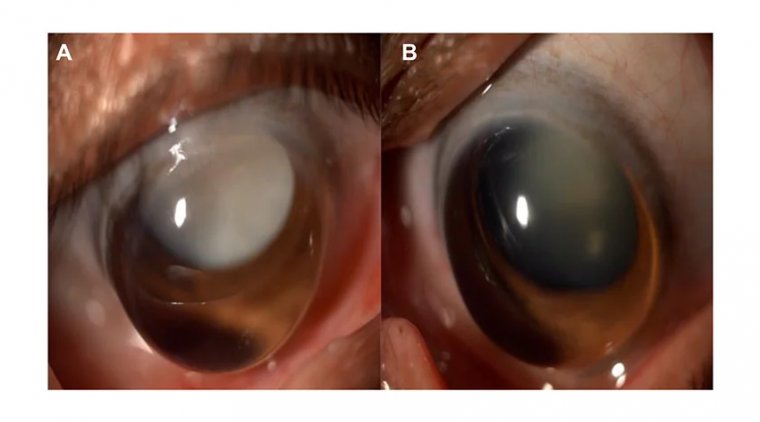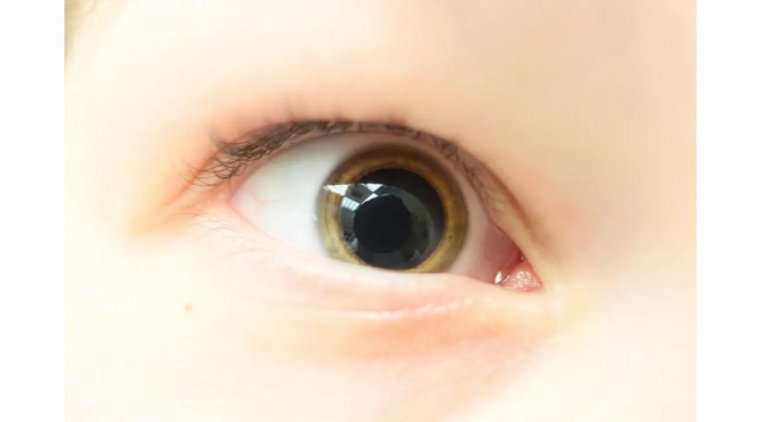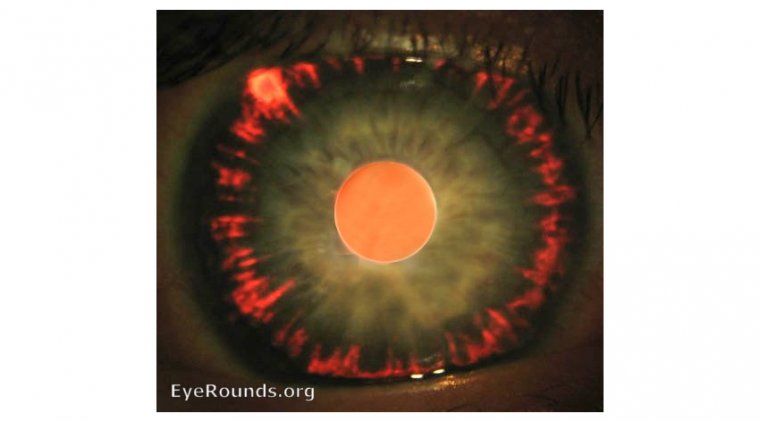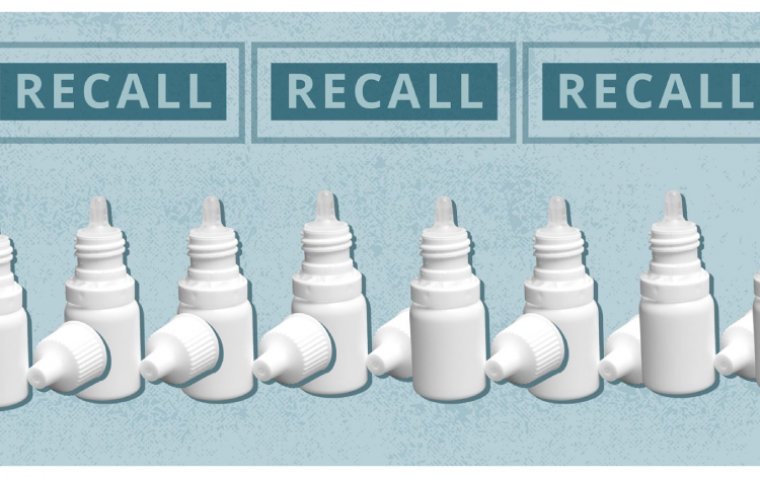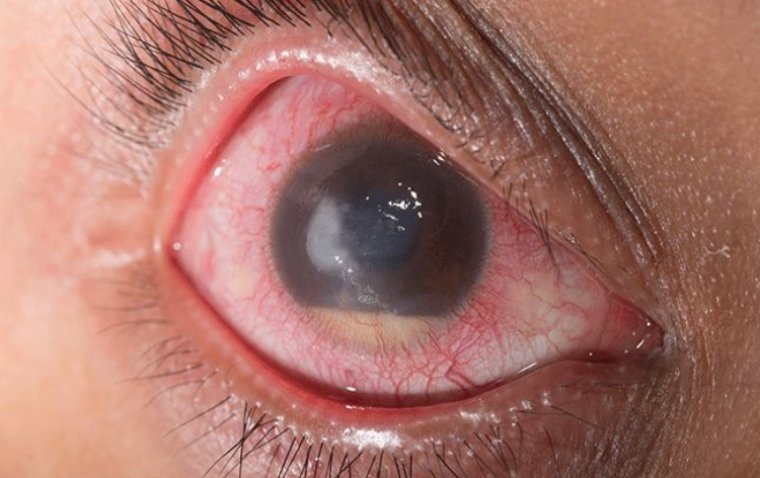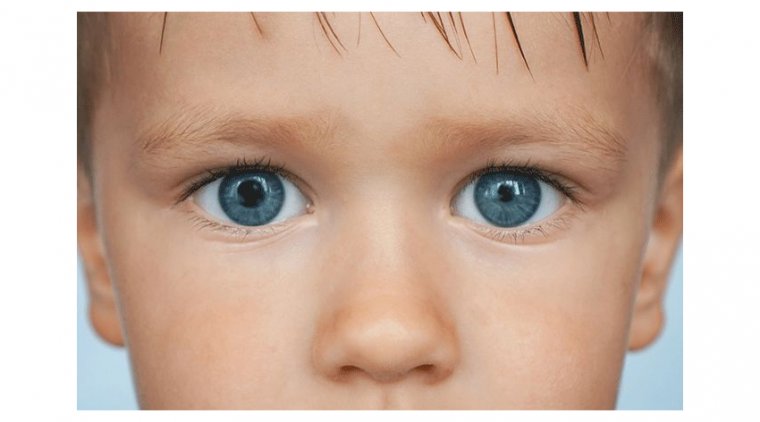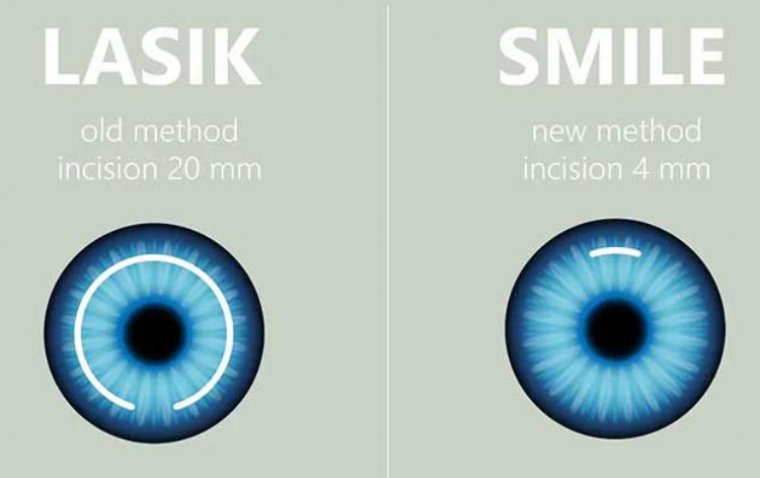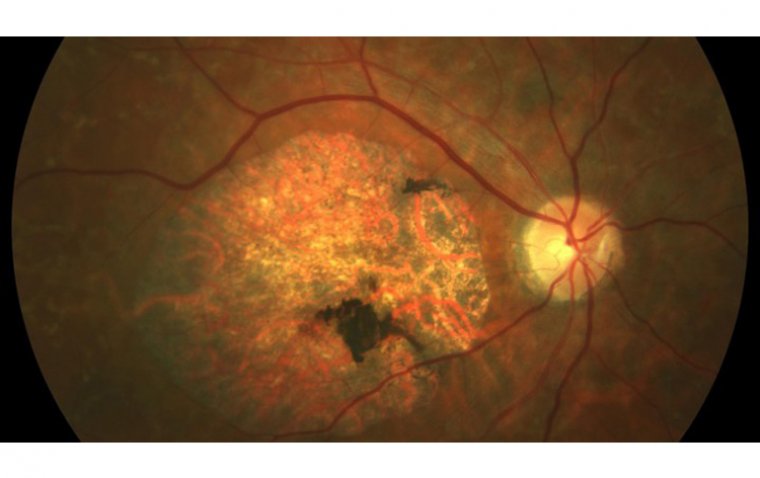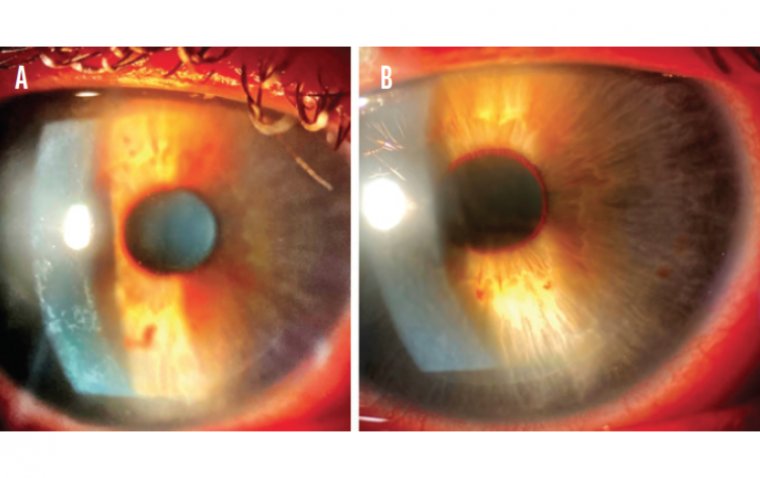
Understanding Diffuse Lamellar Keratitis after LASIK Surgery
What is Diffuse Lamellar Keratitis (DLK)?
Diffuse Lamellar Keratitis, commonly referred to as DLK, is an inflammatory condition that can occur following LASIK (Laser-Assisted In Situ Keratomileusis) eye surgery. DLK is characterized by inflammation in the corneal flap, which is created during the LASIK procedure. This condition is not to be confused with the more typical postoperative inflammation, as DLK is an abnormal and potentially sight-threatening inflammatory response.
In LASIK, a thin flap is created on the cornea, and the surgeon reshapes the underlying tissue to correct refractive errors. DLK typically develops within the first few days to a week following LASIK surgery, although it can occasionally occur later. It is considered a non-infectious inflammatory response that can affect one or both eyes, with its severity varying from mild to severe.
DLK Symptoms and Signs
Diffuse Lamellar Keratitis (DLK) presents with several common symptoms and signs, which can help in its recognition. It's important for both patients who have undergone LASIK surgery and their eye care professionals to be aware of these indicators. The key symptoms and signs of DLK include:
● Increased Eye Redness: One of the most noticeable signs is an increase in redness in the affected eye or eyes.
● Eye Discomfort or Pain: Patients often report mild to moderate eye discomfort or, in some cases, pain in the eye with DLK.
● Reduced Visual Clarity: Blurred or hazy vision in the operated eye, which is unresponsive to the use of artificial tears, is a common symptom.
● Light Sensitivity: Increased sensitivity to light, known as photophobia, is frequently reported.
● Watery Eyes: Excessive tearing or watery eyes might be a sign.
● Foreign Body Sensation: Patients may describe a sensation of having a foreign body or grit in the eye.
● Increased Inflammation: In DLK, the eye may exhibit elevated levels of inflammation, which can be detected during an eye examination.
Causes and Risk Factors of DLK
Diffuse Lamellar Keratitis (DLK) is primarily an inflammatory condition that can occur following LASIK (Laser-Assisted In Situ Keratomileusis) surgery. While the exact cause of DLK isn't always clear, it is thought to be related to several factors, including:
1. Inflammatory Response: DLK is primarily an immune response that occurs when the body recognizes the corneal tissue as foreign, leading to inflammation. This inflammatory response might be triggered by cellular debris, microorganisms, or other unidentified factors that come into contact with the corneal flap created during LASIK surgery.
2. Microbial Contamination: In some cases, DLK can be associated with the presence of microorganisms, although this is relatively rare. Inadequate sterilization of surgical instruments or contamination of the surgical field can introduce bacteria or fungi that provoke an inflammatory response.
3. Inadequate Steroid Use: Corticosteroid eye drops are typically prescribed following LASIK to reduce inflammation. Inadequate or improper use of these medications can increase the risk of DLK.
4. Delayed Epithelial Healing: Any factor that delays the healing of the corneal epithelium (the outermost layer of the cornea) can increase the risk of DLK. Conditions like dry eye syndrome or certain medications can slow down epithelial healing.
5. History of Eye Infections or Inflammation: Patients with a history of eye infections or corneal inflammation might be at a higher risk of DLK.
6. Improper Postoperative Care: Not following postoperative care instructions, such as excessive rubbing of the eyes, can increase the risk of DLK.
7. Environmental Factors: Some environmental factors, such as exposure to dust or other contaminants, can theoretically play a role in DLK.
DLK Grading and Classification
Diffuse Lamellar Keratitis (DLK) is classified into different grades based on its severity. Ophthalmologists use a grading system to categorize and monitor DLK following LASIK surgery. The grading system typically consists of four grades, ranging from mild to severe:
● Grade 1 (Mild DLK): Grade 1 DLK is characterized by subtle signs of inflammation, such as fine white blood cells (WBC) infiltrates under the LASIK flap. These infiltrates are limited in size and location and often do not affect visual acuity significantly. Mild DLK is typically asymptomatic or associated with minimal discomfort.
● Grade 2 (Moderate DLK): In Grade 2 DLK, the inflammation is more noticeable, with larger WBC infiltrates extending further under the corneal flap. Patients may experience blurred vision, light sensitivity, and eye discomfort. This stage requires careful monitoring and typically responds well to treatment with corticosteroid eye drops.
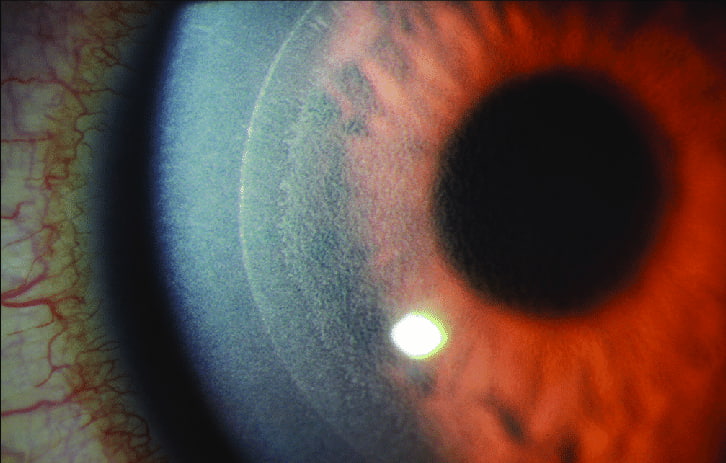
A Case of Grade 2 Diffuse Lamellar Keratitis Post LASIK Credit: Research Gate
● Grade 3 (Severe DLK): Severe DLK involves a marked inflammatory response with extensive WBC infiltrates. It can significantly impact vision, causing more pronounced blurriness, foreign body sensation, and photophobia. Prompt treatment is essential in this stage to prevent potential complications.
● Grade 4 (Advanced or Diffuse DLK): Grade 4 DLK is a rare but potentially sight-threatening condition. It involves widespread inflammation, corneal swelling, and marked visual impairment. Immediate and aggressive intervention is crucial in Grade 4 DLK, including the use of strong corticosteroids and, in some cases, lifting and irrigating the LASIK flap.
How to Treat DLK
The treatment of Diffuse Lamellar Keratitis (DLK) is crucial to prevent complications and ensure a successful LASIK outcome. The choice of treatment depends on the severity of DLK, with more severe cases requiring more aggressive intervention. Here are the primary treatment options:
1. Corticosteroid Eye Drops: Corticosteroid eye drops, such as prednisolone acetate, are the mainstay of DLK treatment. The frequency and dosage depend on the severity of DLK. In milder cases, they may be used every 1-2 hours, while in more severe cases, they may be administered more frequently. The dosage is gradually tapered as inflammation subsides.
2. Topical Antibiotics: In addition to corticosteroids, broad-spectrum antibiotic eye drops may be prescribed to prevent or treat any potential infection. Antibiotics are especially important when the LASIK flap is lifted for treatment.
3. Intensive Monitoring: Regular postoperative follow-ups are essential to monitor the progress of DLK. Ophthalmologists will examine the patient's eyes to assess inflammation and ensure the treatment is effective. Frequent visits may be required, especially in more severe cases.
4. Flap Lift and Irrigation: In cases of severe DLK (Grade 4), or when the inflammation is not responding to corticosteroids, the LASIK flap may need to be lifted and irrigated to remove inflammatory cells and any foreign material. This procedure is typically performed in an operating room.
5. Oral Corticosteroids: In rare cases of very severe DLK that doesn't respond to topical medications, oral corticosteroids may be prescribed. These are potent anti-inflammatory drugs with systemic effects, and their use is closely monitored due to potential side effects.
6. Treatment for Underlying Causes: If DLK is associated with other issues like microbial contamination, these underlying causes must also be treated accordingly.
Preventing DLK
Preventing Diffuse Lamellar Keratitis (DLK) is essential to ensure a successful LASIK procedure and reduce the risk of complications. Here are some strategies to minimize the risk of DLK:
Choose a Skilled Surgeon: The experience and skill of your LASIK surgeon play a significant role in preventing DLK. Select a qualified, board-certified ophthalmologist with a good track record in LASIK surgeries.
Follow Preoperative Guidelines: Adhere to all preoperative guidelines provided by your surgeon. This includes discontinuing contact lens use for the specified period before surgery and maintaining overall eye health.
Strict Aseptic Techniques: Surgeons and their operating staff should follow strict aseptic (sterile) techniques during the LASIK procedure to prevent contamination of the corneal flap.
Proper Postoperative Care: Following LASIK, it's crucial to comply with the postoperative care regimen provided by your surgeon. This often involves applying prescribed eye drops, protecting your eyes from irritants, and avoiding rubbing your eyes.
Monitoring for DLK Symptoms: Both patients and surgeons should remain vigilant for signs of DLK, such as redness, discomfort, and blurred vision. If any symptoms occur, prompt evaluation and treatment are essential.
Regular Follow-Up Appointments: Attend all scheduled follow-up appointments with your surgeon. These visits are vital for monitoring your eye's healing process and identifying any early signs of DLK.
Avoid Eye Rubbing: Refrain from rubbing your eyes, especially during the initial healing phase. Rubbing can dislodge the corneal flap and potentially introduce contaminants to the surgical site.Protect Your Eyes: Use protective eyewear, such as sunglasses, to shield your eyes from dust, wind, and harmful UV rays, particularly in the early postoperative period.
Avoid Water Exposure: For a specific period after LASIK, avoid water activities such as swimming. Water may introduce contaminants to the eyes.
Manage Risk Factors: If you have risk factors for DLK, such as a history of eye infections or inflammatory conditions, discuss them with your surgeon. They may recommend additional precautions.
DLK After LASIK: What to Expect
Diffuse Lamellar Keratitis (DLK) is a condition that can develop after LASIK surgery, and understanding what to expect is crucial for a successful recovery. Here's what you should be aware of:
● Time of Onset: DLK typically occurs within the first few days to the first week after LASIK surgery. Therefore, it's essential to pay close attention to any changes in your vision or eye comfort during this period.
● Symptoms: Common symptoms of DLK may include redness, discomfort, blurred vision, light sensitivity, and excessive tearing. If you experience any of these symptoms, it's crucial to report them to your surgeon.
● Grading and Classification: DLK is often graded by its severity, with higher grades indicating a more significant issue. Your surgeon will evaluate the condition during postoperative check-ups and classify it accordingly. Early detection and intervention are essential in managing DLK effectively.
● Treatment: If DLK is detected, your surgeon will recommend appropriate treatment. This may include additional or intensified use of steroid eye drops to reduce inflammation and close monitoring of your progress.
● Recovery Period: The recovery period for DLK can vary depending on its severity. Most cases respond well to treatment, and patients experience improvement within days to weeks. However, in more severe cases, it may take longer for vision to stabilize.
● Follow-Up Appointments: After LASIK surgery, you will have several follow-up appointments with your surgeon. These appointments are crucial for monitoring the healing process and detecting any complications like DLK early.
● Possible Complications: While DLK can cause temporary vision disturbances, early diagnosis and treatment generally lead to positive outcomes. However, in rare cases, severe or untreated DLK can result in persistent visual impairment. It's essential to follow your surgeon's recommendations and report any unusual symptoms promptly.
● Compliance with Medication: If your surgeon prescribes eye drops, it's essential to use them as directed. Proper medication compliance can significantly influence your recovery from DLK.
Summary
In summary, Diffuse Lamellar Keratitis (DLK) is a condition that can occur after LASIK surgery, and understanding its characteristics is essential. It typically manifests within the first week post-surgery, with symptoms such as redness, discomfort, blurred vision, light sensitivity, and excessive tearing. DLK is graded by severity, and early detection during follow-up appointments is vital.
Treatment usually involves the intensified use of steroid eye drops and close monitoring by your surgeon. While most cases respond well to treatment and result in improved vision, severe or untreated DLK can lead to persistent visual impairment.
In this context, maintaining compliance with prescribed medications is crucial. Not all LASIK patients will experience DLK, but staying informed about the condition and promptly reporting any unusual symptoms are essential for a successful recovery. Regular communication with your surgeon and adherence to postoperative care recommendations are key to ensuring the best possible outcomes following LASIK surgery.
(1).jpg)

